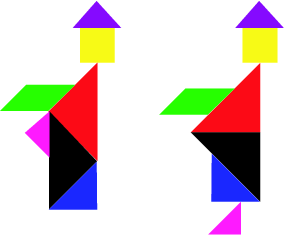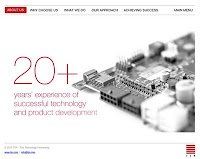
The demise of the printed version of Design Week earlier this year after 25 years was a real blow for the print industry as well as the design industry as a whole. Here at TTP we looked forward to receiving each copy, with its mix of news, comment and profiles. Many of us were to be found at lunchtime, actually reading, not just skimming through it. Given that we spend most of our time staring at screens, it can be a welcome relief to read something on paper.
The death knell has supposedly been sounding for print for the past few years. Does the demise of Design Week (the printed version at least) mark the final nail in its coffin?
In a word, no. Whilst there’s no doubt that print media has suffered since the digital age exploded, it’s down, but not out. Yes, Amazon’s ebook division may have comprehensively outsold its print counterparts in the US (
115 to 100 respectively), but there are other signs that suggest print isn't out for the count.
The latest research to come out of the US found that new magazine launches in the first half of 2011 were up 53% from the same period in 2010, from 90 to 138. The number of publications that closed fell 15% from 87 in the first half of 2010 to 74 in the first half of 2011. The UK market is seeing similar trends. The end of 2010 saw the launch of a new quarterly publication, Delayed Gratification, by the international editor of Time Out. The very title and its unapologetic tagline, “last to breaking news” is surely the antithesis of the immediate, yet throwaway news culture embodied by the digital age, featuring in-depth analysis of the previous three months’ news. The success of the free Stylist magazine, the rise in circulation of the now free Evening Standard and the launch of i from the Independent all hint at recovery.
Of course, the advent of the Internet and the increase in hand-held, digital devices has irrevocably altered the way we consume news and brings many benefits. When it comes to breaking news, the immediacy of online has a real advantage, but for longer articles, analysis and features, I believe print will always triumph. Digital formats, whilst interactive and exciting, just don’t lend themselves very well to this type of in-depth reading, being suited to more easily digested, easily disposed of snippets.
Let’s not forget the sheer physicality of print media. It's probably its saving grace. Books, magazines and newspapers are tangible and appeal to many of our senses; they are heavy, glossy, tactile, the pages crackle when they’re turned, and then there’s that newly printed smell of magazines, not to mention the romantic smell of musty old books.
Books, magazines and newspapers are evocative in a way that no electronic format can ever be. And that’s a very good thing.
I will freely admit I’m a Luddite when it comes to technology. I can barely work my iPhone, more than one TV remote confuses me and when it comes to books, I’m a romantic - I want the feel, smell and experience of an actual book. But I know not everyone agrees with me and, ultimately it should be the content that’s important, not the medium.
Electronic formats do of course have numerous benefits and e-readers are in many ways far more practical than books. They are incredibly light, readable in any light, store hundreds of novels and are bringing books to a new generation of people constantly on the go. They also save paper, enable a less expensive distribution of books and can help first time or unknown authors publish without an agent.
The problem is, as with all technology, what happens when the next generation of e-readers hits shops? Will all the obsolete models be destined for silicon heaven? Electronic waste is a huge issue due to our reliance on machinery– but that’s a topic for another blog.
However, the best argument I have heard against e-readers is that you can’t tell what other people are reading on the tube! Now, for those who have to suffer the daily commute on the tube, craning your neck to spy on others’ reading material takes your mind off the stale aroma emanating from the stranger’s armpit wedged above your head. Whether it’s interest in the book, a way to pass the time or plain old sniggering at someone else’s embarrassing book choice (come on, we’ve all done it) it’s a great form of people watching. Leaning in to get a proper look at someone’s e-reader means getting far closer than is socially acceptable, and surprisingly enough, people don’t seem to appreciate it very much.
But then again, the flip side of this is that no one else can see what you’re reading either. A quick poll of the ttp office suggests that boys really don’t want to be caught reading ‘chick lit’ or DIY manuals, whilst women are ashamed to admit they read self help books, dating guides, or any cheesy romance novel. But thanks to e-readers we can indulge that Twilight habit in complete anonymity!
Here at tothepoint we’ve embraced digital but a great deal of our work is print; whether it’s corporate literature, ads, staff handbooks, brand guidelines or bid documentation. The advent of digital was a huge cultural change and has altered the playing field irrevocably. The scope of what we can do now in terms of design is staggering, and looks set to become even more so.
Neither print nor digital is better; they are just different, with one sometimes more appropriate than the other to deliver a specific message. Having said that, many of our clients want both print and digital, working together so that they can maximise the effectiveness of their campaigns. Therefore, the challenge always remains the same, to deliver something that is innovative, relevant, unique and exciting - regardless of the medium.
Penny Davies.
Account Manager / Copywriter.
Additional comment by Ben Jackson (Head of Digital):
Whilst I agree with pretty much everything Penny's written above, I'm not sure the best argument for print is its lack of privacy! Whilst I probably embrace new technology more than most at TTP, even I was very sceptical when I heard about the Kindle (et al). However, I must admit, I wouldn't be without mine now - of course it's not the same as reading a real physical thing, but the clarity of the screen, the simple controls and (most importantly) the ease of lugging around all your books – whether on the daily commute or on the sun-lounger makes it the perfect book replacement for me. And I definitely prefer the Kindle to something like the iPad - whilst Apple's device is capable of so much more, that's also its downfall as a reading device - the screen, weight and dimensions just aren't so well suited to longer periods of reading.
That doesn't mean the Kindle will ever replace print in general though. Reading a glossy magazine, brochure or a throw-away copy of the Metro is a totally different experience and it would be very sad indeed to think the days are numbered for the more physical medium. And while technology marches on, there still isn't a perfect solution in terms of a single device that can do it all (although Apple's iPad and Amazon's new 'Fire' would like you to believe otherwise).
As ever, the disruptive effect of digital communications does not mean that the old ways of communicating are dead, they simply mean that there are ever more channels with which to impart your message and interact with your audience. Where the latest iPad newspaper apps may offer new ways to view and interact with media, I still hope that there will be a place for printed versions too.
The next big frontier for printed news is quite how to create a business model that incorporates both and actually makes money. News International are still experimenting with their grand pay wall that excludes anyone who's not signed up. Whereas the new releases of the Guardian on Kindle, iPad and Android focuses on a more open approach - but are they making any money from it?
Who knows, it may not be digital at all that ends up killing print - it could instead be a combination of poor journalism (regurgitating PR bias, poor fact checking, bad practices in order to get a story) combined with the widely held belief that the huge abundance of online content should always be freely accessible (perhaps it's all Google's fault?) But only time will tell on that score.
Ultimately, I think we should stop talking about one medium replacing another and realise that we need to play to each medium's strengths - printed newspapers may well have to give up trying to top Twitter as the first to the news and instead focus on great, well written content and opinion that's been created (and checked!) by those who really know their stuff (let's face it, Twitter and the average blog will NEVER replace that).
Feel free to express your opinion below (or maybe send a postcard?).
Ben Jackson,
Head of Digital.











































